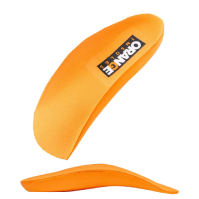Every few years there are different diet plans that claim to be the best way to be healthy and lose weight. And it even seems like the rules for eating change every few years; eat eggs, don’t eat eggs, red wine is great, red wine is bad (as it stands, the survey says red wine is good for your heart!)…it’s hard to keep track of. Even the food pyramid has changed!
But eating healthy doesn’t have to be complicated. Eating a diet balanced with the right amount of protein, veggies, grains, and carbs (no, you don’t have to give them up!) is the best way to eat healthy. The portions of each type of food will be different for everyone, especially if you’re trying to lose weight vs just eating healthy, but being healthy is all about balance and we’ve got tips for balancing your diet below.
Hint: When we say “diet” we’re talking about the foods you eat every day, not a “fad” way of eating to help lose weight.
Portion Your Plate
Portioning your plate will vary based on how many calories you’re eating in a day, but the below numbers are a general, healthy average to stick to.
Fruits & Veggies Win
Fruits and veggies should make a up a whopping 50% of your plate. Leafy greens have a lot of fiber and are a great part of a balanced diet.
Not sure about fruit with dinner? Try it for desert! You could even add some honey or a sprinkle of dark chocolate chips.
Meats & Proteins
Meat was probably the “main course” for you growing up, huh? That’s probably true for most. But meats and other proteins should only account for 25% of your plate in a balanced meal.
In fact, the average American diet actually contains more protein than is needed. If you consume more protein than your body can use, the body converts it into glucose or fat, which can lead to weight gain.
And your protein doesn’t even need to be meat. Proteins include:
- Beans
- Eggs
- Nuts
- Tofu (unless you’re avoiding soy)
If you are using meat, avoid fried meats and try to buy grass-fed and those free from additives and hormones.
Healthy Starches
Yes, we said healthy starches. French fries don’t count. Fiber-rich carbohydrates should make up the other 25% of your diet.
Healthy starches include:
- Quinoa
- Brown rice
- Sweet potato
The occasional “white” potato is fine, just remember…moderation is key! These types of potatoes lack the nutrients sweet potatoes or the above foods have.
Make Healthy Choices
These numbers are a great base, but it’s more important to pick the right foods than weigh or measure your food…especially if you’re just trying to eat healthy rather than lose weight.
What’s the best way to make healthy choices and avoid “bad” foods? Make healthy eating a habit rather than a rule. Here are some tips.
- Avoid processed foods (we can’t stress this enough. If you do one thing for your diet, this should be it)
- Shop the perimeter of the grocery store (the fruits, veggies, meats, eggs, nuts, dairy..all the good stuff)
- Read the ingredients (this is so important—try to avoid anything where sugar is the first ingredient or anything that contains high fructose corn syrup or too many words you can’t pronounce)
- Don’t eat too close to bedtime (experts recommend waiting at least 3 hours after eating before going to bed)
- Feeling like a snack? Try a glass of water. You might just be dehydrated.
- Don’t forget healthy fats! Not all fat is bad. Add some olive oil, nuts and seeds, or avocado to your meals!
- Add fruit to water to curb your craving for sweets and have a refreshing treat
You don’t have to starve yourself (and you shouldn’t!) or even deny yourself to eat healthy. The occasional treat is fine if you are filling your diet with healthy foods above. Just like life, healthy eating is all about balance and if you balance your diet, your body will thank you!
Extra tip: To balance your body, make sure to add Orange Insoles to your shoes while standing in the kitchen or browsing the grocery aisles.

























































